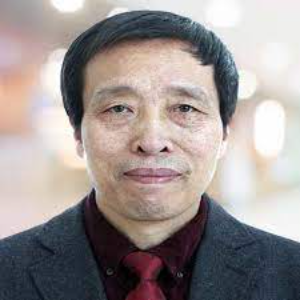Title : Changes in rapeseed canopy spectral reflectance under different cultivars and nitrogen levels
Abstract:
I t is particularly important that obtain and diagnosis crop growing, nitrogen nutrition status real-timely, fast and nondestructively through informatization technology. This experiments were carried out at Jiangsu Provincial Academy of Agricultural Experimental Farm from 2014 to 2016, the field experiments for varieties and fertilizer were set up. Using of Crop Scan MS16R, and ASD Field Spec Hand-Held, the spectrum reflectance for various rapeseed growth period was measured. Through rapeseed spectral information, physiological and biochemical indices and statistical analysis, the relationships between the spectral reflectance characteristics and the leaf nitrogen contents for rape seedlings under the various cultivars and nitrogen levels had been cleared, the sensitive spectral bands in rape seedlings leaf nitrogen content were found, and the rapeseed monitoring model of leaf nitrogen content for rapeseed seedlings were constructed based on spectrum. This provided a theoretical basis and technical support for the use of remote sensing technology in rapeseed nitrogen application, nondestructive sensing monitoring for leaf nitrogen, and fertilizer recommendation suitability, etc. The results were as follows: 1. Changes in the spectral reflectance from transplanting to flowering stage for rapeseed gradually decreased in the visible range, while gradually increased in the near infrared region; However, after flowering, canopy spectral reflectance increased gradually with the development of postponement in the visible range, but gradually reduced in the near infrared region. 2. Rapeseed spectral reflectance had significant differences under different nitrogen levels, and three rape varieties had similar trend, especially in the near-infrared region. The increased nitrogen levels improved spectral reflectance in the near-infrared region, but in the visible place, increased nitrogen levels reduced spectral reflectance. 3. Between the varieties of rapeseed, changes in rapeseed canopy spectral reflectance curves were the same. But there were some differences in canopy spectrum reflectance between varieties of rapeseed. It may be due to the different crop varieties, effect of background soil and weed coverage. There are some differences in the whole growth process, even under the same conditions of field management, resulting in the difference between the spectra of different varieties. 4. At 870nm and 1320 nm bands there were a very significant correlation on spectral reflectance and leaf nitrogen content in seedling phase .The coefficient of determination R2 was 0.651 and 0.670. Through single-band linear and nonlinear regression analysis, the coefficient of determination presented regularity of the regression equation corresponding to each band, That was that: R2 Polynomial >R2 Logarithm >R2 Linear >R2 Exponentiation >R2 Index .R870 and R1320. The corresponding to the polynomial regression equation between the single band reflectance and rape leaf nitrogen content, R2 reached to 0.73 and 0.795, so it can be used to characterize the quantitative relationship between 870nm and 1320 nm bands.



